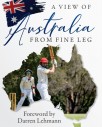Cricket 2.0
Jonathan Northall |Published: 2019
Pages: 370
Author: Wigmore, Tim and Wilde, Freddie
Publisher: Polaris Publishing
Rating: 4.5 stars

There has been a noticeable absence of cricket books around the subject of T20 cricket. Tim Wigmore and Freddie Wilde have filled the void with a gem of a book. Wigmore and Wilde are the first authors to deep dive into T20 cricket, and the result is well worth the cost of the book. The cricket-writing DNA of Wilde is apparent, less evident for Wigmore, but the combination of the two has produced a book of merit.
The book itself allows the reader to ‘peer behind the curtain’ and be guided through the machinations of T20 cricket. I would argue that the book heralds a welcome schism between cricket fans; the naysayers, opining about T20 not being “proper” cricket, and the rest who are willing to question the propriety of, and everything we thought we knew about, cricket. If Haynes were to produce a manual about T20 cricket, this would be it.
The book has two forewords: Harsha Bhogle and Michael Vaughan. I can understand the use of Bhogle and his association with the IPL, but the inclusion of Vaughan left me feeling slightly confused. A divisive and opinionated character at times, I don’t understand why Vaughan was asked. The book is so T20 focussed; it seemed that a foreword from a T20 specialist would enhance it. However, we have Vaughan; arguably, a GP was asked to perform a surgeon’s job. It’s a small gripe about a thoroughly enjoyable book.
Once the prologue is out of the way, the book opens with Indian Premier League (IPL) and demonstrates how individuals such as Brendon McCullum and Venky Mysore have changed cricket and how it’s played. It’s fascinating to see how analytics have added to and disproved thinking in cricket. With Wilde’s day job being with CricViz, it is unsurprising to see plenty of tables and statistics to highlight points raised in the book. There are numerous examples of tactics in T20 vis-a-vis Test cricket with plenty of exponents enriching the analysis with comments. It’s an impressive feat of the book to see how many current, and past, players have spoken with the authors.
Throughout the book, the reader is continually reminded that India has most of the power, and money, in world cricket. The IPL regularly appears on the pages, as you would expect, being the golden egg of T20 that other cricket boards can only wish that they had a similar goose as the BCCI. The book does explore other T20 tournaments around the world, and The Hundred is mentioned too, but the book always comes back to the IPL.
There are several standout chapters in the book. Chris Gayle warrants a chapter for his exploits in T20 cricket and the authors explore the dichotomy of Gayle the player and Gayle the man. The chapter on spin bowling is part history and part analysis of the efficacy of the art in T20 cricket. The chapter on corruption, and how T20 has exacerbated the problem, is a sad indictment. The authors produced telling quotes, from anonymous sources, on how pernicious and pervasive the problem is. This chapter should form part of any material produced on anti-corruption in cricket. The cautionary tales are treated sympathetically and are essential to cricket’s future.
Near the end of the book appears a chapter on the ‘democratisation’ of cricket. Looking at how the game is becoming global on one level, the authors make a compelling case for cricket fans to wake up and see that the whole world plays cricket, not just Full Members. The undeclared champion of the cause, from the pages of the book, is Rashid Khan. Khan could be the poster boy of the growing egalitarian movement within cricket. Readers who are aware of the player through, perhaps, the Cricket World Cup or the IPL should realise that many others in domestic cricket could be the next Rashid Khan if given a chance.
The book concludes with an exploration of the West Indian proclivity for producing excellent performers in T20 before a curious epilogue, with 32 predictions, and several appendices. The reader is left with far more knowledge of how T20 cricket works than they started. I found that the book took longer to read than anticipated. Not because it was not enjoyable, but because of the wealth of evidence to formulate conclusions and the time taken to digest them.
I would imagine that Cricket 2.0 will inspire many books on the shorter forms of the game. I would offer a word of warning to any would-be authors looking to cash in. Wigmore and Wilde have set the bar incredibly high, with a book of such quality, so take heed before trying to add to the T20 lexicon.




Leave a comment